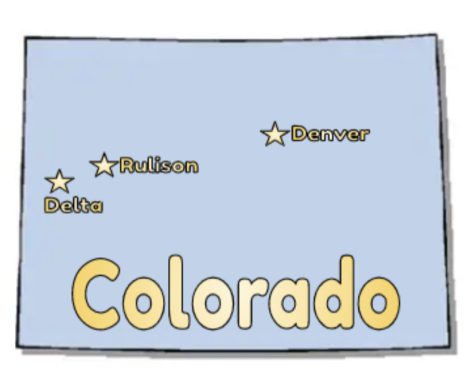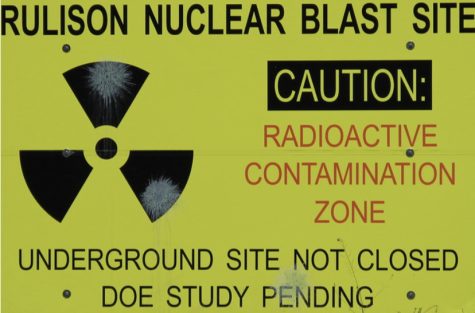Project Rulison: Chernobyl in our backyards
March 17, 2023
In our own backyard, nearly 55 years ago, scientists worked towards developing new fracking strategies. Several miles outside of Rulison, Colorado, a town near Parachute, a nuclear bomb was detonated. This was called Project Rulison.
Operation Mandrel was responsible for Project Rulison, but also 52 total detonations between 1969 and 1970. Rulison took place on September 10th of 1969. The goal of the project was to access natural gas as a cheaper and more efficient strategy of fracking, while ultimately making the most money. It was initially part of a bigger plan called The Plowshare Program which wanted to find different ways to go nuclear with only positive effects after The Second World War.
The Western Slope wasn’t the first place that Plowshare attempted this. The first location was in New Mexico by the name of Project Gasbuggy with a 26-kiloton thermonuclear bomb about 4,200 feet underground. It resulted in too much radioactivity, but the scientists on Project Rulison, believed that if they tweaked a few things, they could find success.
Looking towards nuclear fission instead of nuclear fusion, the Rulison nuke was a 40-kiloton bomb. An equivalent to 40,000 tons of TNT, it’s been reported that residents in Parachute, 20 minutes away from Rulison, felt the effects.
While some people in the surrounding area didn’t care much, others protested. Some residents simply had work off, but some were fighting against the detonation. They feared for the aftermath of the nuke, worrying that any radiation may have negative lasting effects on their beloved area.
Told to be outside in case of any possible damage, residents were to stand outside at 3 PM. After the blast, not too much happened, but some bricks and pantry items were knocked down in the surrounding area. Despite the little damage, it was still felt by the people in the area in an earthquake-like manner.
Overall, the project flopped, but that didn’t stop them from trying elsewhere. They attempted this again with bigger bombs in the Rifle area several years later. Other detonations were located in Rio Blanco County, where it got its name, Project Rio Blanco. Three bombs were detonated for this project.
Huntley Hamilton, a Social Studies Teacher at Delta High School, had heard a little on this topic. “In the late 1960s, a well was clogged in the Rulison area. After much debate, it was decided to use an atomic bomb to unclog it.”
Project Rulison was a hot topic in the area for a little while, yet it’s hardly ever spoken about today. Mr. Hamilton’s father lived in Delta at the time of the Rulison detonations. Hamilton referred to it as “widely known” during the time.
While the detonations definitely happened, there were plenty of people who were not happy about what was going down in Rulison. Activists from Denver and Boulder worried about the radiation’s possible lasting effects, and giving reason for their worries, they’ve even done water testing for traces of radiation reported last in 2017 and mining and drilling is restricted in the area.
One group of activists were only two miles away from the site before detonation in an attempt to stop it. Helicopters were even sent out to try to clear out the protesters. While they did run to a clearing for safety, the bomb, which had almost twice the strength of the bomb dropped at Hiroshima in WWII, lifted the activists about half a foot in the air when it hit.
While some gas was released from the nuclear explosion, none of it was actually used for malintention but was considered unsafe. If the project had succeeded, there were plans to detonate 100-200 more blasts between Rifle and Parachute area to really get it going.
Many were left disappointed after the project’s failure, while some were still angry about the project not having been canceled.
“What’s ironic about it, is it contaminated the well so much that although it opened it up, the natural gas in the well was unusable,” said Hamilton.


